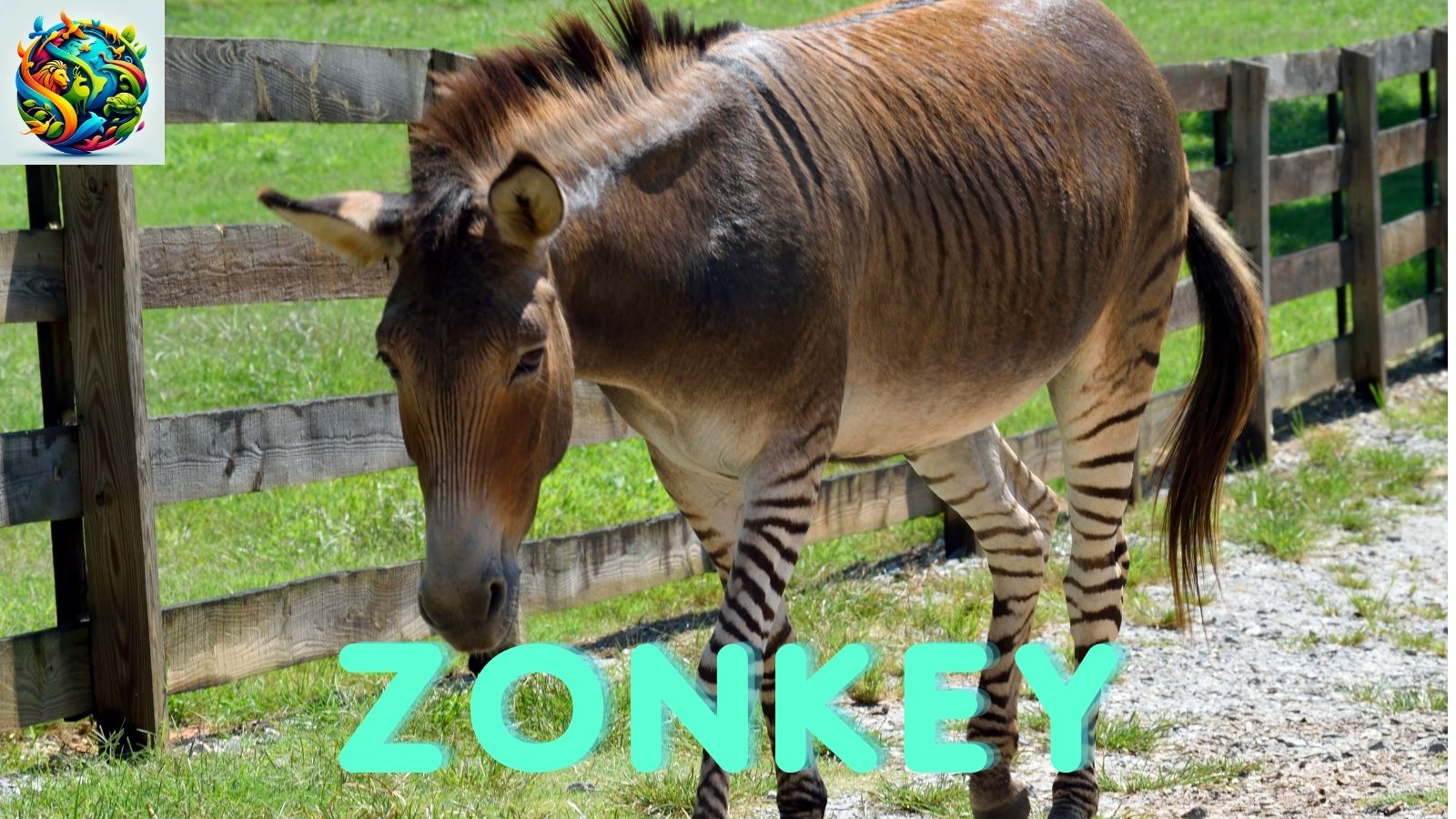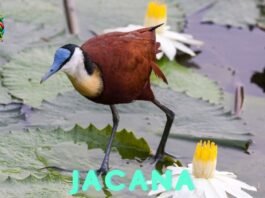Zonkey: Magnificent Zebra and Donkey Hybrid
They are hybrids produced from the mating of zebras and donkeys. It is a fascinating and rarely observed creature that adopts the physical features of both parents. Because these hybrids are not capable of surviving in the wild due to the stark differences in behaviour of the two species, they are usually only seen in controlled breeding environments or captivity. They are known for its striped coat and sturdy build, possessing unique traits that make them a symbol for genetic diversity. In the following write-up, we will take a dove deeper into them and their habitats, behaviours, and diet.
Zonkey’s Facts:
- Rare Hybrids: Their most hybrids are rare to come across because zebras and donkeys are not likely to mate with each other due to differences in behaviour and habitats.
- Sterility: As is the case with most hybrids, they are sterile as well. This is due to the difference in the number of chromosomes in both zebras and donkeys. Zebras have 44 chromosomes, while donkeys have 62.
- Unique Coat Patterns: It is a blend of zebra and donkey, meaning they each have strikingly distinctive traits. They possess striped legs and parts of their bodies layered with the solid colour fur of donkeys.
- Inherited Strength: Since their donkey parent possesses unmatched physical endurance, so can zonkeys.
- Hybrid Behaviour: Unlike Zonkeys, donkeys and zebras are known to be somewhat wary and cautious creatures, which is a behavioural trait Zonkeys inherit. This, alongside their zebra parent’s wariness and donkey parent’s gentle nature, comes in handy for their survival.
Habitat and Diet:
Habitat:
Due to their inability to survive in the wild as well as the key differences between the habitats of zebras and donkeys, they are primarily located in:
- Captivity: Wildlife, private reserves, and zoos where donkeys and zebras are raised together.
- Farmlands: Because both of their parents are domesticated, they are at times bred to be working animals.
Diet:
They are predominantly herbivores, like their zebra and donkey parents. This, along with the fact that they require plant-based foods, makes them extremely easy and affordable to take care of.
- Primary food source: Grass which consists of micronutrients, essential nutrients, and fibre.
- Hay and Alfalfa: Their diet is often supplemented in zoos and farms because of the lack of plants in the environment.
- Fruits and Vegetables: They are known to enjoy apples, carrots, and other produce as treats.
- Water: In hot climates, they especially require unlimited clean and fresh water.
Appearance of Zonkey:
When ceadrating their parents characteristics, they are visually striking and allow their parents to stand out.
- Coat: Their coats combine zebra stripes with the fur of a donkey. Stripes are more defined on the legs with the possibility of expanding to the body, while the primary colour differs because of the donkey parent.
- Ears: Large upright ears inherited from the donkey.
- Tail: A tufted tail similar to that of a zebra.
- Mane: They have a short, bristly mane that is nearly identical to a zebra’s.
Types/Subspecies of Zonkey:
They do not have subspecies as they are hybrids. Nevertheless, the type of zebra that they are crossbreed with determines their variants:
- Plains Zebra Zonkey: A hybrid that is most frequent. This goes from a plains zebra mixed with a donkey.
- Mountain Zebra Zonkey: From the mountain zebra parent, they have narrower and more defined stripes.
- Grevy’s Zebra Zonkey: Very rare, having narrow, defined stripes from the endangered Grevy’s zebra.
Predators and threats:
Natural Predators:
They have no natural predators because they do not exist in the wild. Mostly, though, their zebra parent would have usual threats like:
- Lions and Hyenas: Target Zebras as they are the apex predators.
- Wild Dogs and Cheetahs: Prey on weaker or younger zebras.
Threats:
They are generally safe when kept in captivity; however, they contend with certain problems, including the following:
- Health Issues: Because of their mixed lineage, hybrids have the potential to experience some genetic issues.
- Human Impact: There is always the possibility of some form of abuse or negligence within some ill-regulated facilities.
Mating and Reproduction:
They are produced with the aid of a male zebra (stallion) and a female donkey (jenny).
- Why Zebras and Donkeys Can Hybridise: Both remain species within the Equus genus, so it is possible to interbreed even with the heavy differences in the amount of chromosomes present.
- Gestation Period: Gives birth to a foetus after twelve months, just like how a donkey does.
- Sterility: They are usually incapable of reproduction because of genetic reasons that render them infertile.
How They Communicate:
Some features, such as the passing and receiving of messages from one parent to the other, get inherited:
- Vocalisations: They can bray like donkeys, from time to time interspersed with the zebra’s barks, which are much higher in pitch.
- Body Language: The position of their ears, as well as the swinging of their tail and posture, incorporates emotions and intention, similar to what zebras and donkeys do.
- Social Behaviour: They are timid and cautious, similar to zebras, but gentle and cooperative, like a donkey.
Movies Featuring Zonker:
- Zookeeper (2011): In this family-friendly film, there are a few zoo animals like them, a zebra and donkey hybrid, who is one of the most comical characters. The animals around the zookeeper ‘talk’ and even assist him in his romantic endeavours.
- Dr. Dolittle 2 (2001): This splendid comedy film will truly amaze you! The infamously peculiar doctor with the ability to speak to his patients resembles a zebra and a donkey hybrid. One of the doctor’s encounters aids him in a humorous way.
- The Wild (2006): In this animated adventure, there are lots of different characters, one being the zonkey. In the plot, the animal characters from the Central Park Zoo go on a trip to the wilderness and meet a zonkey as one of the funny animals they encounter.
- Zonkey (2016): This short film displays the life of the young hybrid zonkey and the struggles of fitting in. The film dives deep into the themes of acceptance, identity and the unique life of the hybrid zonkey.
How would you pronounce it?
- English: (/ˈzɒŋ.ki/)
- Spanish: (/ˈsoŋ.ke/)
- French: (/zɔ̃.ki/)
- German: (/ˈtsɔn.ki/)
- Mandarin Chinese: 斑驴 (Bān Lǘ)
- Japanese: ゾンキー (Zonkī)
- Russian: Зонкей (Zonkey)
- Arabic: زونكي (Zonki)
- Hindi: ज़ोंकी (Zonki)
FAQs:
Q: Are zonkey real animals?
A: Yes, these hybrids are a carbon copy of the crossbreed between donkeys and zebras that exist.
Q: Are they found in the wild?
A: These creatures do not exist in the wild. They can only be found in controlled atmospheres or in captivity.
Q: Can they reproduce?
A: These hybrids are most often sterile owing to the donkeys and zebra’s genetic inertia.
Q: What is the diet of them?
A: They consume grass, hay, and other vegetables and fruits occasionally. Their diet is herbivorous.
Q: What is the reason for the rarity of them?
A: Due to differences in habitat and behaviour, mating of zebras and donkeys occurs very infrequently, thus making Zonkeys a rare crossbreed.





Wow! Thank you! I always wanted to write on my website something like that. Can I include a part of your post to my blog?
I just couldn’t depart your site before suggesting that I extremely enjoyed the standard information a person provide for your visitors? Is gonna be back often in order to check up on new posts
Hi! This is my first visit to your blog! We are a group of volunteers and starting a new project in a community in the same niche. Your blog provided us useful information to work on. You have done a outstanding job!
Thanks for helping out, excellent information.
Useful information
Those are yours alright! . We at least need to get these people stealing images to start blogging! They probably just did a image search and grabbed them. They look good though!